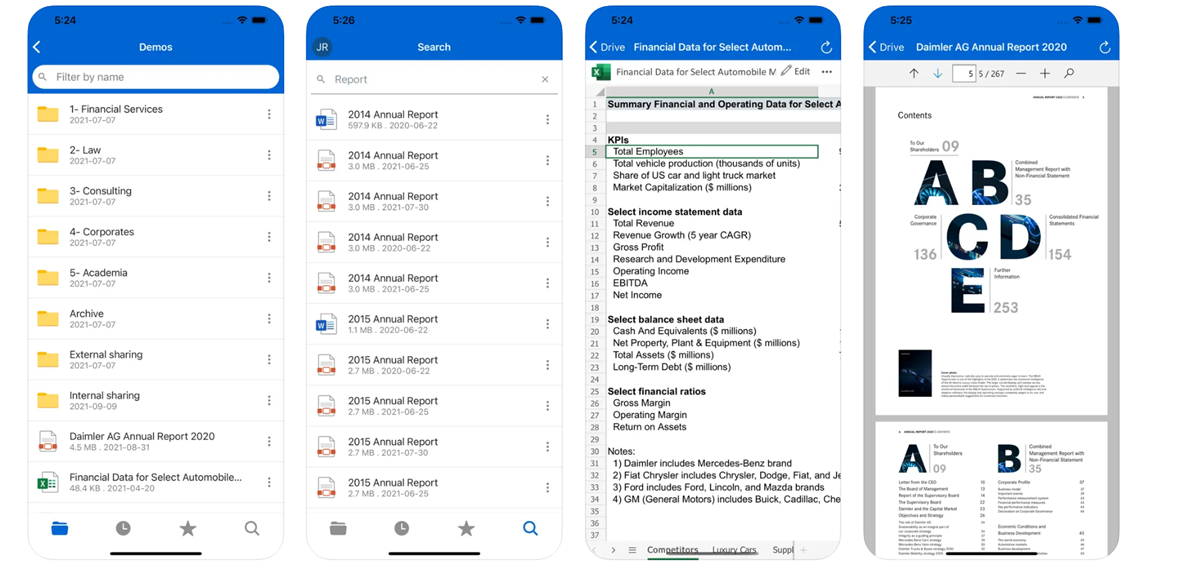SynergyOS overview

Welcome to SynergyOS! This guide will help you learn how to use SynergyOS, along with some tips and tricks to become a power user quickly. Let’s dive in!
SynergyOS is an open server operating system designed for work and collaboration. It integrates features from Enterprise Content Management (ECM), Messaging and Chats, Customer Relationship Management (CRM), Project and Task Management into a unified platform, acting as a central hub for your company's information. With a design focus on extensibility, SynergyOS facilitates integration with other applications through app bridges.

Access SynergyOS through:
- Web Application: A Progressive Web Application (PWA) installable on Windows and Mac, accessible at app.synergyos.com.
- Synck Application (or Synergy Tools): A bridge application connecting the SynergyOS cloud repository with your local file system on Windows or Mac.
- Mobile Application: Available for iOS and Android, providing quick access on the go.
Web Application
The web application serves as SynergyOS's primary interface, comprising:
- Toolbar: Contains navigation controls and primary action buttons relevant to the active tab.
- Tabs: Segmented sections hosting functionalities like Drive, Messages, Tasks, etc.
- Navigation Pane: Adapts content and structure based on the active tab, enabling a contextual browsing experience.
- Main View: Exhibits content, such as file and folder lists, with various viewing modes like list view and grid view.
- Details Pane: Offers detailed information and actions for selected items, organized across tabs like Info, Preview, Versions, etc.
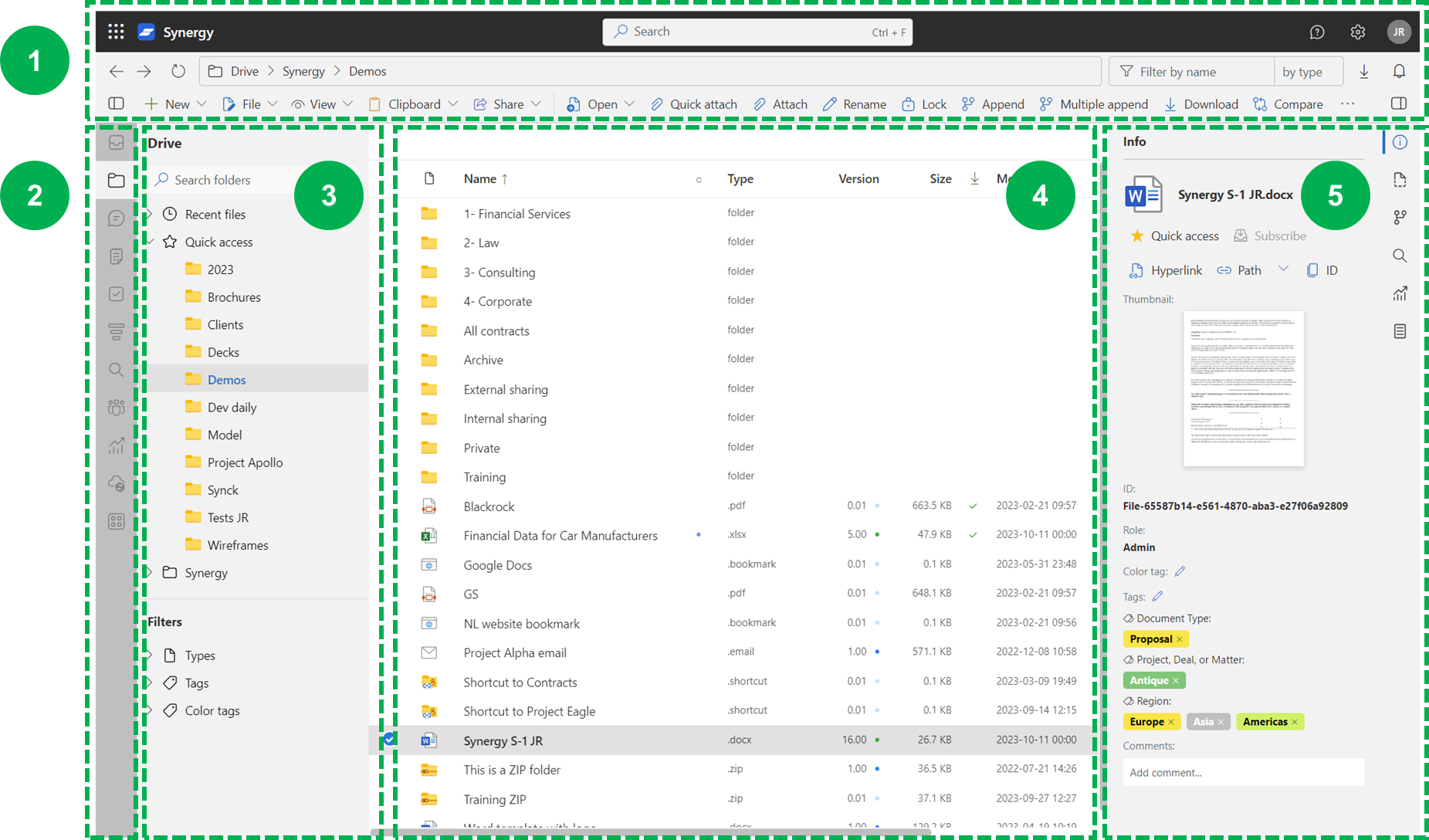
1. Toolbar
The toolbar houses navigation controls and the primary action buttons for the active tab.
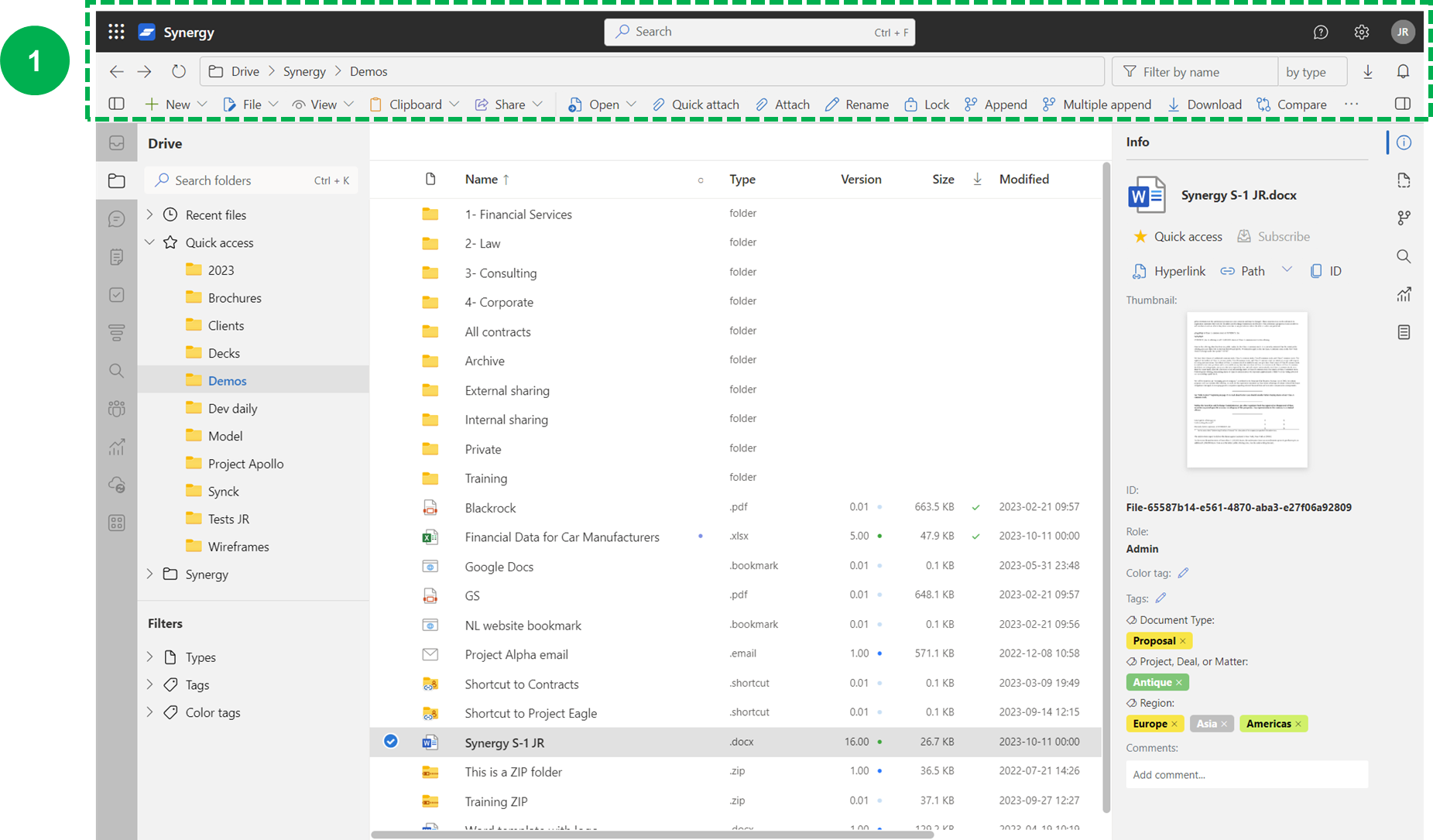
2. Tabs
Functionalities in SynergyOS are organized across configurable tabs. Default tabs include:
- Notifications: Receive notifications about files, messages, tasks, and other actions.
- Drive: The primary section for accessing, managing, and sharing files.
- Messages: Communicate and collaborate with team members.
- Notes: Capture notes and ideas.
- Tasks: Manage tasks and to-dos.
- CRM: Manage relationships with projects, contracts, companies, and contacts.
- Projects: Manage and track project progress and deliverables.
- Contracts: Manage and track contracts and agreements.
- Companies: Manage and track company relations and interactions.
- Contacts: Manage and track individual contacts and interactions.
- Search: Search across all files in the repository and retrieve information instantly.
- Company Directory: List of internal, guests, and external users.
- Activity: View all your activity.
- Tags: Set up, browse, and organize the tag structure for the repository.
- Public Links: View and manage public links for sharing.
- Smart Folders: Access saved searches easily with an updated search query saved as a folder.
- Subscriptions: Manage your subscriptions for notifications.
- Exported Folder Trees: View exported indexes of folders and files shared.
- Sync: Work offline and sync your files back to the central repository.
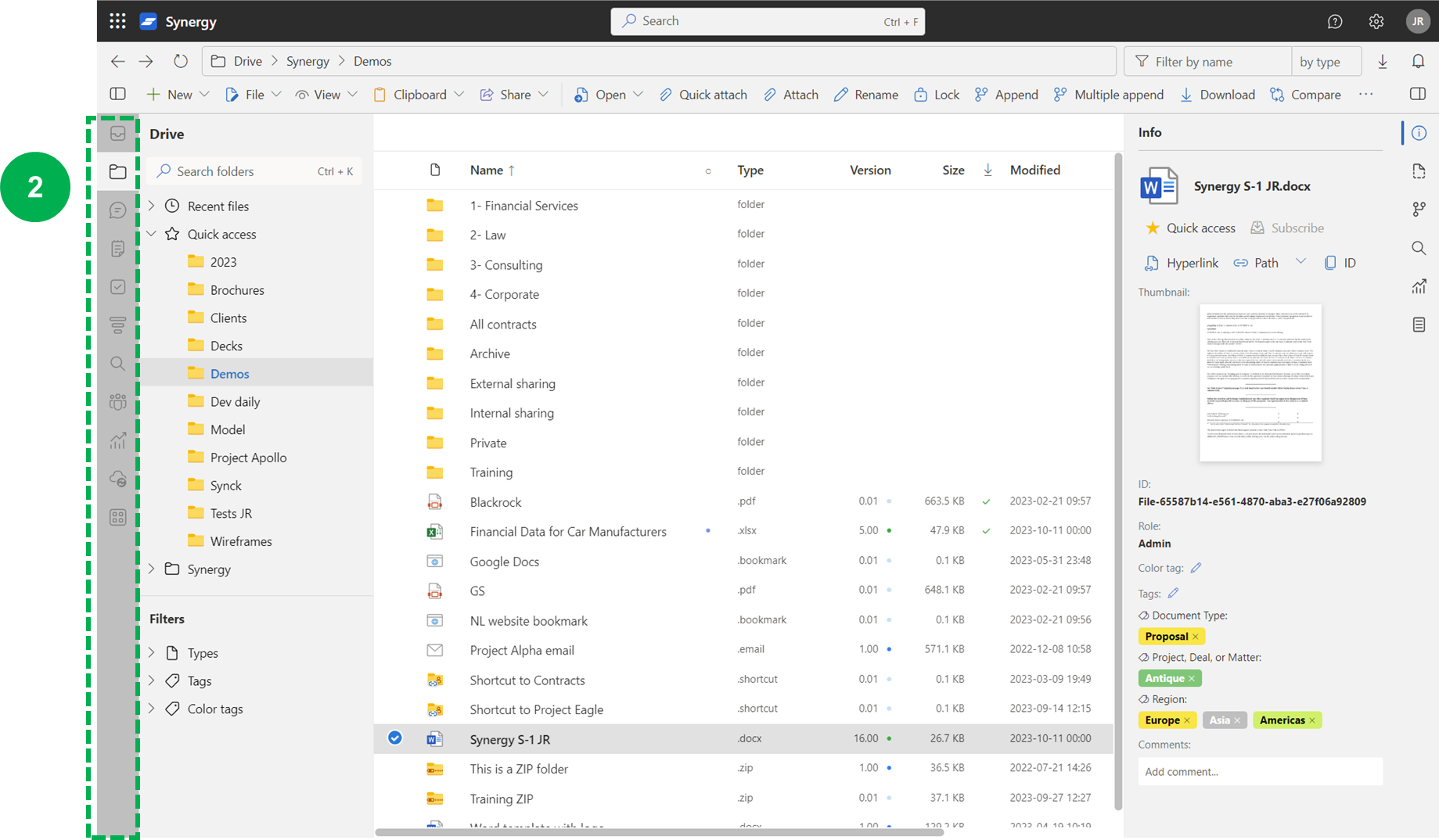
3. Navigation Pane
Adjusts content and structure based on the active tab, enhancing the browsing experience. For instance, in the Drive tab it features:
- Recents: Displays the files and folders you have recently used.
- Quick Access: Provides a shortcut to frequently accessed files and folders.
- Your Folders: Showcases the folders you have access to.
- Filters: Apply filters to view specific files in the selected folder.
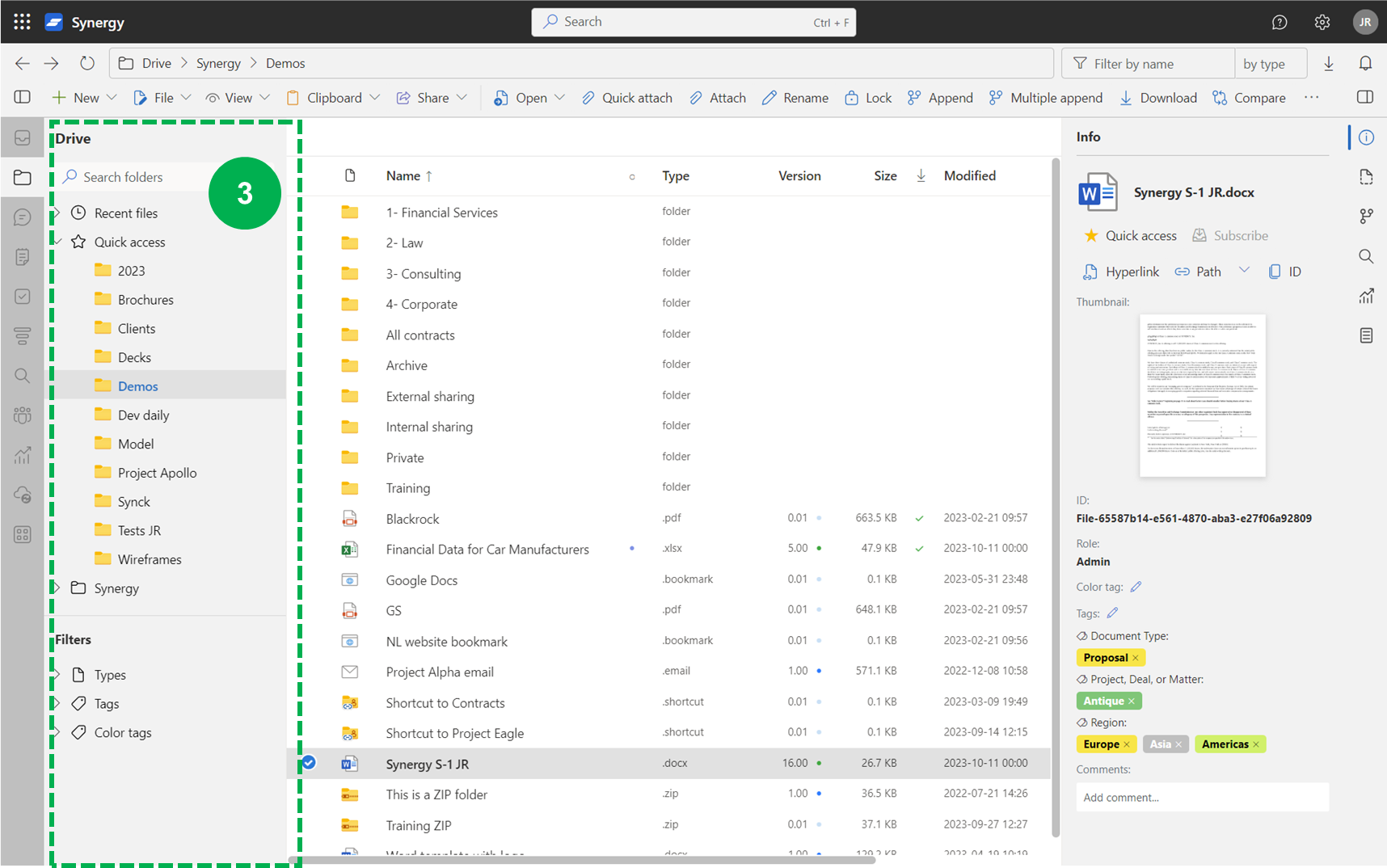
4. Main View
Begins with a header displaying column titles for an organized view of your folder and file list. Clicking any column heading sorts the folders and files accordingly. It provides viewing modes like list view, grid view, etc., for user convenience.
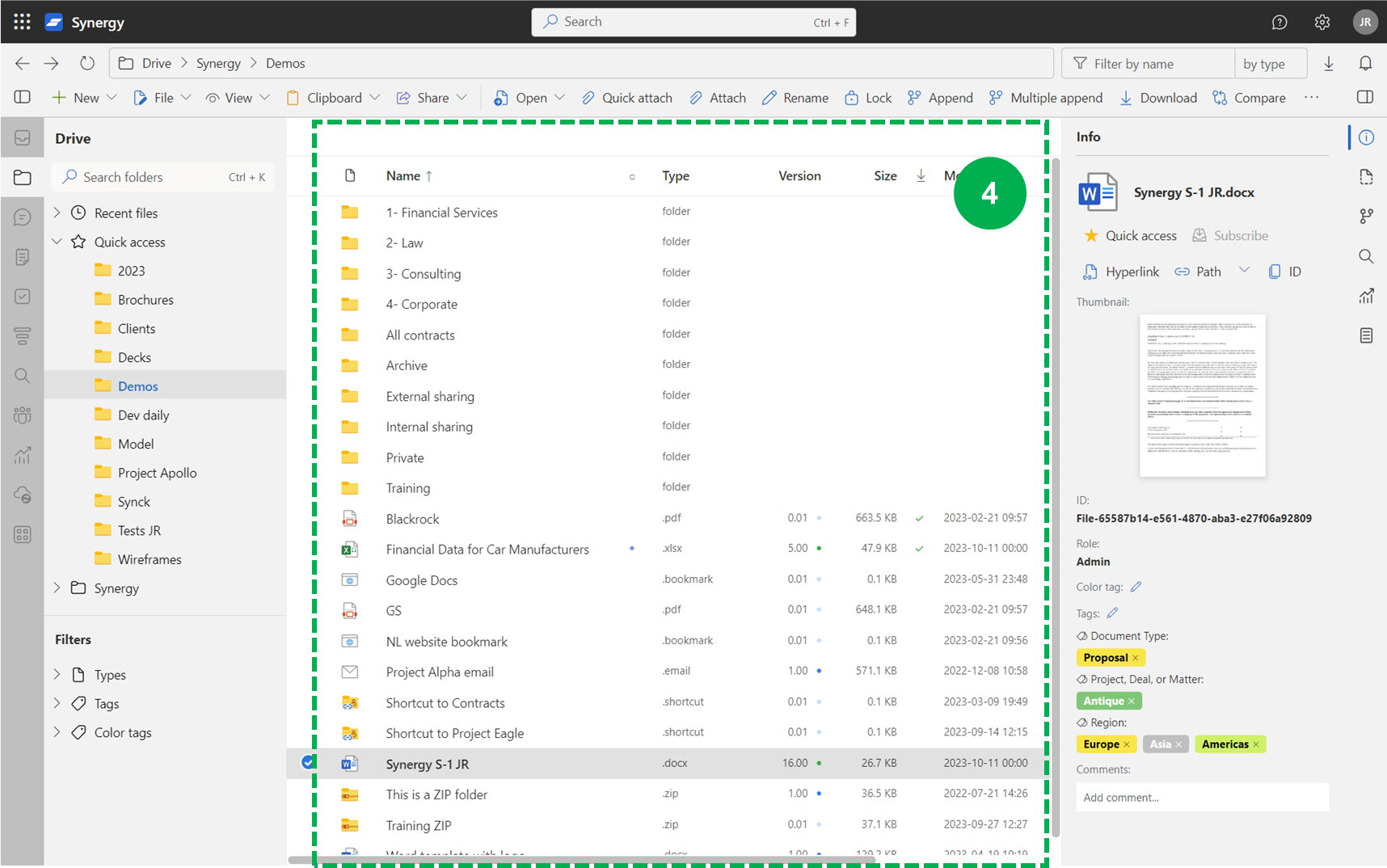
5. Details Pane
The Details Pane in SynergyOS furnishes a rich set of information and actions across various tabs. The tabs' availability and nature are contextual, based on the SynergyOS section and the type of selected item.
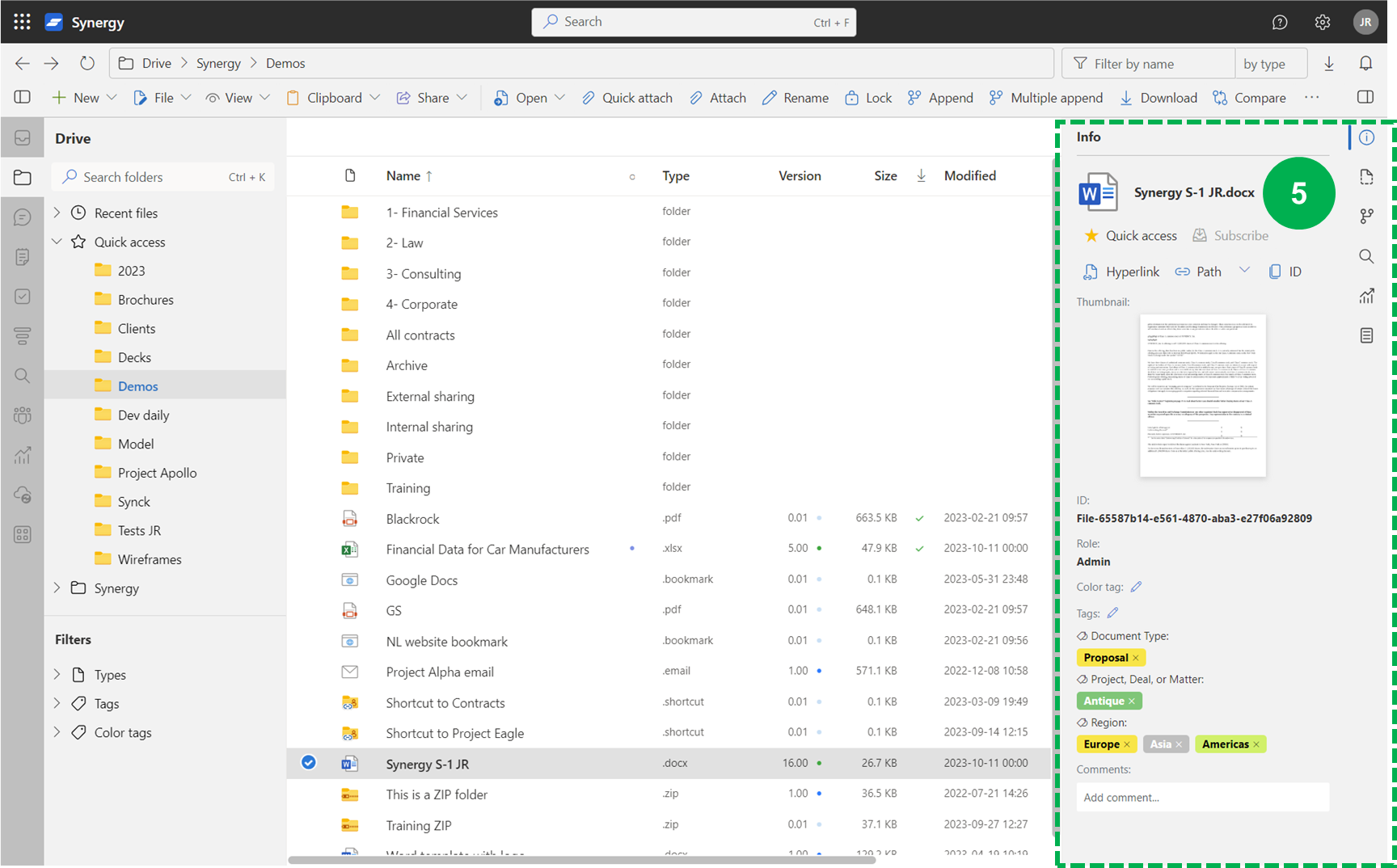
Certain tabs within the Details Pane are common across different sections of SynergyOS, offering a consistent user interface for viewing and managing metadata, regardless of the type of item selected. Other tabs change depending on context. Here’s an overview of these tabs:
1. Info Tab: The Info Tab is a central place for viewing and managing basic metadata associated with the selected item. The information and options available in this tab may vary depending on the type of item selected, but generally include the following:
- Name/Title: Displays the name or title of the item, with an option to modify it. Unlike traditional systems, SynergyOS allows for items of different types to have identical names without causing conflicts.
- ID: Displays a unique identifier assigned to the item, facilitating easy tracking and referencing even if its name or location changes over time.
- Lock Status: Indicates if the item is locked for editing, identifying the user who has locked it, and displaying any optional message they may have included during the lock.
- Tags: Shows the tags associated with the item, including both inherited tags from parent folders or projects, and tags specifically assigned to the item itself. Users have the flexibility to add or remove tags as needed.
- Comments: Provides a dedicated space for users to leave contextual remarks, questions, or any other form of text-based communication related to the item.
2. Preview Tab: The Preview Tab renders a visual preview of the file content, enabling quick identification or review without the necessity to open the file in a separate application. This feature is especially useful for swiftly browsing through multiple files to find the desired one.
3. Versions Tab: The Versions Tab meticulously lists all available versions of the file, distinguishing between Draft, Minor, and Major versions. This structured approach facilitates comprehensive version control, historical tracking, and ensures that users can easily revert to previous versions or understand the evolution of a document.
4. Search Tab: The Search Tab provides a powerful tool for precise searching within the file content. It's designed to facilitate quick retrieval of desired information or specific text passages within the document, enhancing the user's ability to find and extract information efficiently.
5. Activity Tab: The Activity Tab captures all activities related to the file, encompassing modifications, comments, version updates, and more. This detailed audit trail is crucial for tracking changes over time, compliance purposes, and maintaining a clear history of interactions with the file.
6. Details Tab: The Details Tab showcases an extensive set of file properties, providing a holistic view of file attributes and settings. This tab is akin to a control center, where users can view and understand a wide array of file attributes, aiding in better management and organization of files within SynergyOS.
Synck (or Synergy Tools)
The Synck Application is a bridge between the SynergyOS cloud repository and your local file system on Windows or Mac. It embodies the collaborative essence of a git client combined with the user-centric functionalities of a GitHub desktop app, tailored to suit the unique ecosystem of SynergyOS.
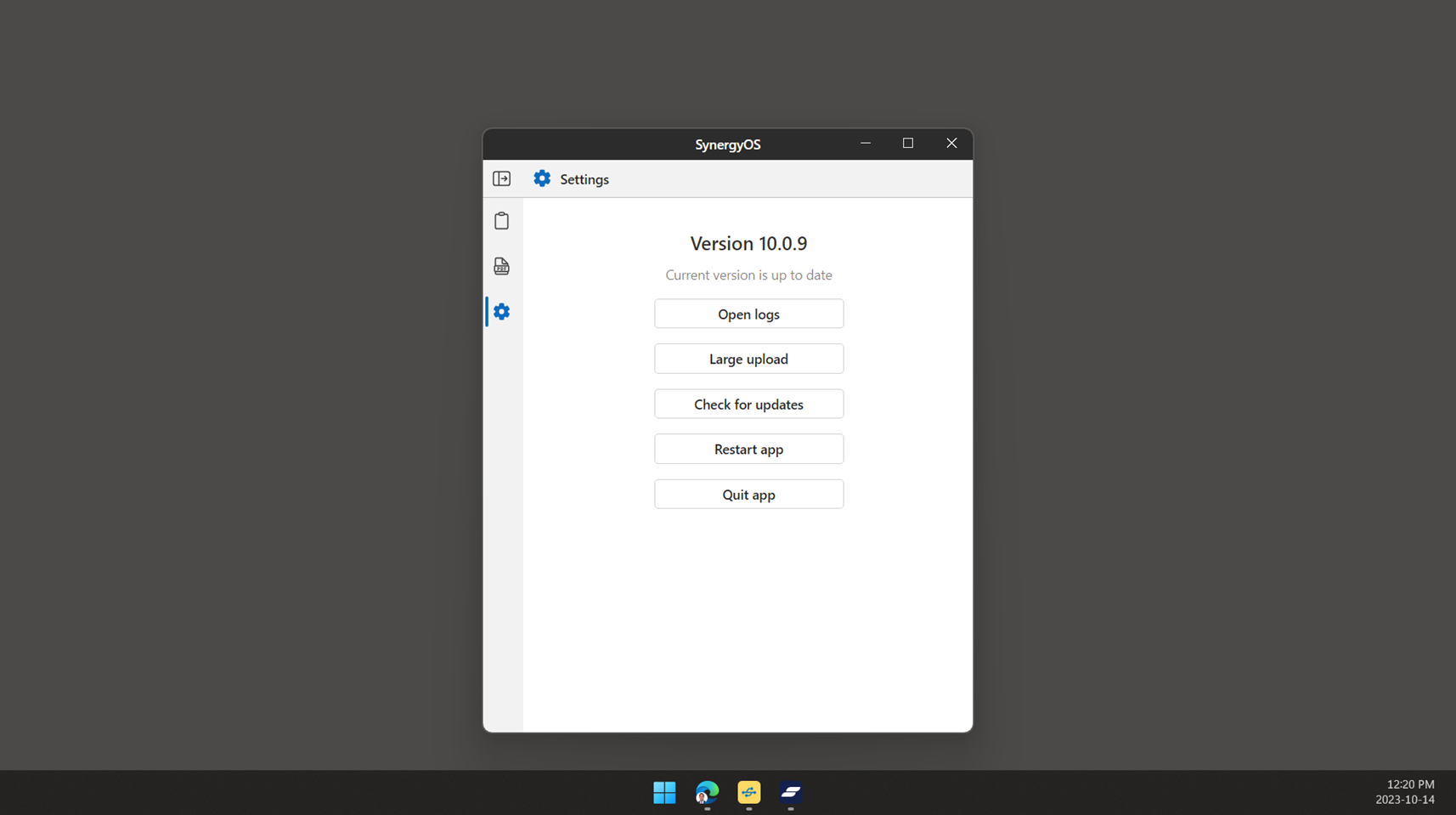
Below are the primary functionalities facilitated by the Synck Application:
1. Real-Time Syncing and File Management
- Upon opening a file from SynergyOS, the Synck Application ensures it's downloaded to a local folder for editing with desktop applications.
- As edits are made and the file is saved, a 'working copy' is maintained locally, which is automatically synced and committed back to SynergyOS once the file is closed.
- This real-time syncing mechanism ensures that the central repository remains updated, promoting a coherent and unified workspace.
2. Offline Work via Working Copy
- Users can checkout files and folders for offline use, with the 'Synergy Working Copy' folder on the local machine serving as a structured workspace.
- All offline edits and management are carried out locally within the 'Synergy Working Copy' folder.
- Post offline work, users can navigate to the Working Copy section in SynergyOS to review changes, commit them back to the central repository, or revert changes as needed.
3. Temporary File Access via SynergyOS Clipboard
- The Synck Application facilitates temporary file access by enabling users to bring files from SynergyOS to the local file system via the SynergyOS clipboard.
- This feature is especially useful for temporary file reviews or when needing to access files swiftly without affecting the central repository.
4. Large Uploads Monitoring
- Synck's Large Uploads feature efficiently handles the upload of substantial volumes of files to SynergyOS, with a design tailored to resume uploads post network disruptions or system restarts. The dedicated Uploads section provides real-time tracking of ongoing uploads, a history of recently uploaded files, and facilitates manual management of uploads.
By fostering a seamless integration between the local and cloud environments, the Synck Application significantly enhances the user experience in managing file operations, ensuring data continuity, and adhering to organizational security and compliance requirements, all while maintaining the collaborative ethos of SynergyOS.
Mobile Application
The SynergyOS mobile application, available on iOS and Android, ensures convenient and quick access on the go.
